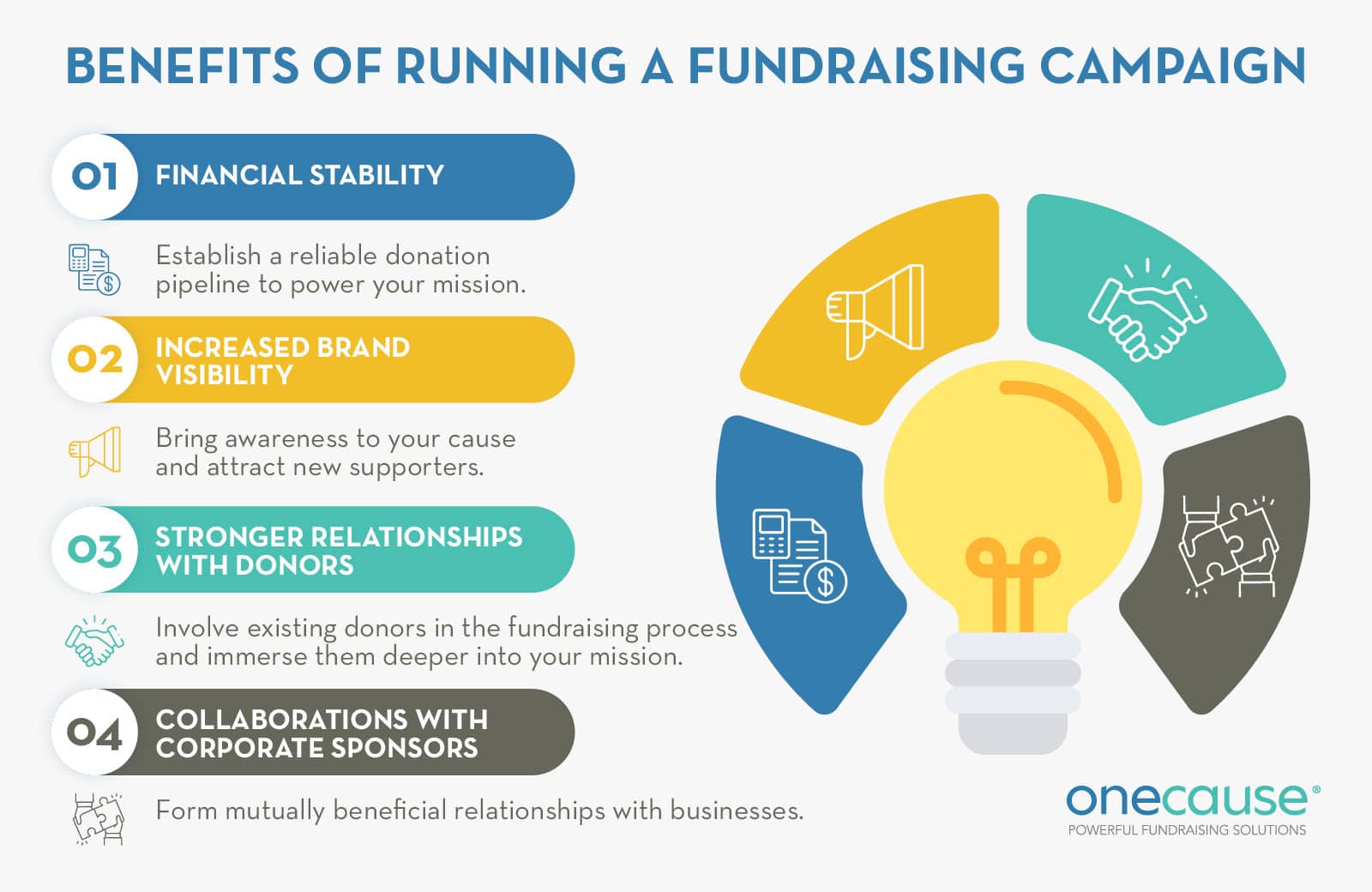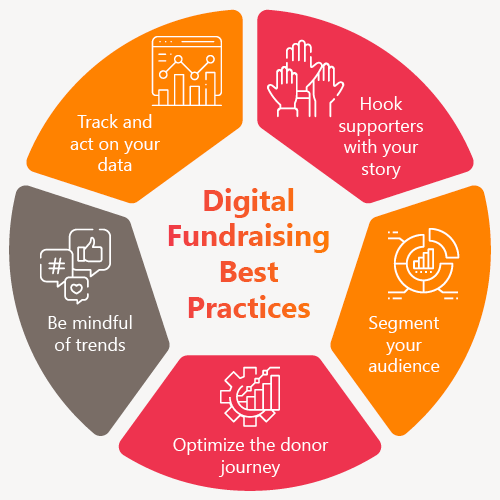Nonprofit Marketing: Just How to Develop a Powerful Brand and Rise Support
Nonprofit Marketing: Just How to Develop a Powerful Brand and Rise Support
Blog Article
The Duty of Community Engagement in Nonprofit Fundraising: Structure Lasting Relationships for Sustainable Assistance
Neighborhood engagement is progressively acknowledged as an essential part of successful not-for-profit fundraising. By promoting genuine relationships with local stakeholders, companies can grow depend on and loyalty, which are vital for sustainable support. However, the approaches and techniques used to engage communities vary extensively, raising vital questions about effectiveness and impact. What are the most effective practices for cultivating these vital links, and just how can nonprofits measure their success in this sector? Comprehending these characteristics might dramatically influence the future of fundraising initiatives and the overall goal of not-for-profit organizations.
Comprehending Area Engagement
Community engagement is a crucial component of effective not-for-profit fundraising initiatives. It describes the methods and tasks that organizations employ to get in touch with their local neighborhoods, cultivating partnerships that are equally useful. Understanding area involvement includes acknowledging its diverse nature, which consists of involvement, cooperation, and outreach. Nonprofits need to determine vital stakeholders-- such as neighborhood participants, regional companies, and various other organizations-- to create efficient involvement techniques.
Effective neighborhood involvement is predicated on energetic listening and responsiveness to the demands and interests of the area. This procedure includes obtaining comments, recognizing community characteristics, and making sure that the company's goal straightens with local top priorities. Involving the neighborhood can take various forms, consisting of public meetings, volunteer opportunities, and partnership efforts, each developed to encourage participation and investment in the organization's objectives.
Additionally, area involvement need to be approached as a recurring discussion instead of an one-time effort. By fostering a comprehensive atmosphere where community voices are listened to and valued, nonprofits can construct a solid structure for future fundraising undertakings. Eventually, a deep understanding of area interaction encourages organizations to create genuine connections that improve their overall efficiency and sustainability.
Benefits of Solid Relationships
Strong relationships formed through neighborhood interaction return numerous advantages for not-for-profit fundraising efforts. Firstly, these relationships foster count on and reliability, important components in encouraging benefactors to add. When potential supporters see a not-for-profit proactively included in their neighborhood, they are a lot more most likely to count on its goal and influence.

In addition, these partnerships help with effective interaction. Nonprofits can leverage their links to share tales of influence, updates, and needs, ensuring that advocates stay enlightened and involved. This open line of communication not just enhances bonds but likewise encourages referral promo, expanding the nonprofit's reach.
Finally, solid area connections can bring in new companions and sponsors. People and organizations are extra likely to align with companies that demonstrate significant neighborhood involvement, giving added sources and assistance that can considerably enhance fundraising capacities. Therefore, growing robust relationships through neighborhood engagement is indispensable to a not-for-profit's long-term fundraising success.
Strategies for Reliable Involvement
How can nonprofits effectively engage their areas to improve fundraising efforts? Normal updates, engaging material, and calls-to-action can galvanize community passion and involvement.
2nd, holding community occasions, such as workshops, volunteer opportunities, or fundraising drives, promotes face-to-face interaction, permitting nonprofits to display their effect and efforts. These occasions not just elevate funds but also grow partnerships and allow community participants to involve directly with the reason.
Third, applying customized communication techniques can enhance involvement. Tailoring messages to particular benefactor segments based upon interests and past payments fosters a feeling of belonging and financial investment in the company's objective.
Lastly, developing collaborations with local services and community leaders can amplify outreach efforts. Collaborative campaigns can enhance visibility and reputation, demonstrating a collective dedication to the community's wellness. By incorporating these More about the author techniques, nonprofits can develop enduring connections that boost fundraising initiatives and drive sustainable support.
Gauging Interaction Success
While involving the community is vital for effective nonprofit fundraising, measuring the performance of these involvement initiatives is equally vital. Establishing clear metrics permits organizations to assess just how well they are getting in touch with their audience and achieving their fundraising goals. Trick efficiency indicators (KPIs) such as benefactor retention prices, volunteer engagement degrees, and interaction on social media sites platforms supply tangible data for analysis.

On a regular basis evaluating these metrics allows companies to pivot their strategies when required, making sure that area interaction remains lined up with their general objective. Furthermore, sharing these results browse around this web-site with stakeholders cultivates openness and builds trust fund, urging additional area participation. Inevitably, a durable measurement structure not only notifies future fundraising initiatives but also strengthens the relationship in between the not-for-profit and its fans, laying the groundwork for lasting success.
Study in Area Influence
Various study show the profound effect that neighborhood involvement can carry nonprofit fundraising success. One noteworthy example is the "Something to chew on" effort, where a regional food financial institution partnered with schools and companies to host community dinners. These events not just raised funds but also cultivated a feeling of belonging amongst participants, considerably enhancing contributor retention prices.
One more engaging case is the "Eco-friendly Spaces Project," which involved local citizens in the revitalization of metropolitan parks. This campaign not only amassed monetary assistance from neighborhood companies but also grew look at this now a volunteer base that added to recurring maintenance and shows. The sense of possession and satisfaction among neighborhood members translated into continual contributions.
In the realm of arts, the "Art for All" campaign efficiently engaged local artists and clients to produce collective art setups, bring about raised exposure and contributions for a neighborhood arts not-for-profit.
These instances highlight that when nonprofits prioritize community participation, they can produce lasting connections that boost fundraising initiatives, ensuring lasting support and cultivating a lively community culture. Such instances show that area involvement is not simply an approach yet a necessary pillar of not-for-profit success.
Verdict
In conclusion, neighborhood engagement is integral to the success of not-for-profit fundraising efforts. Ultimately, a durable foundation of community assistance not just intensifies fundraising potential but also cultivates a culture of collaboration, crucial for achieving long-lasting organizational objectives and sustaining meaningful effect. fundraising consultant.
Nonprofits need to identify key stakeholders-- such as neighborhood participants, neighborhood services, and other organizations-- to develop reliable involvement techniques.

In verdict, community interaction is indispensable to the success of nonprofit fundraising efforts.
Report this page